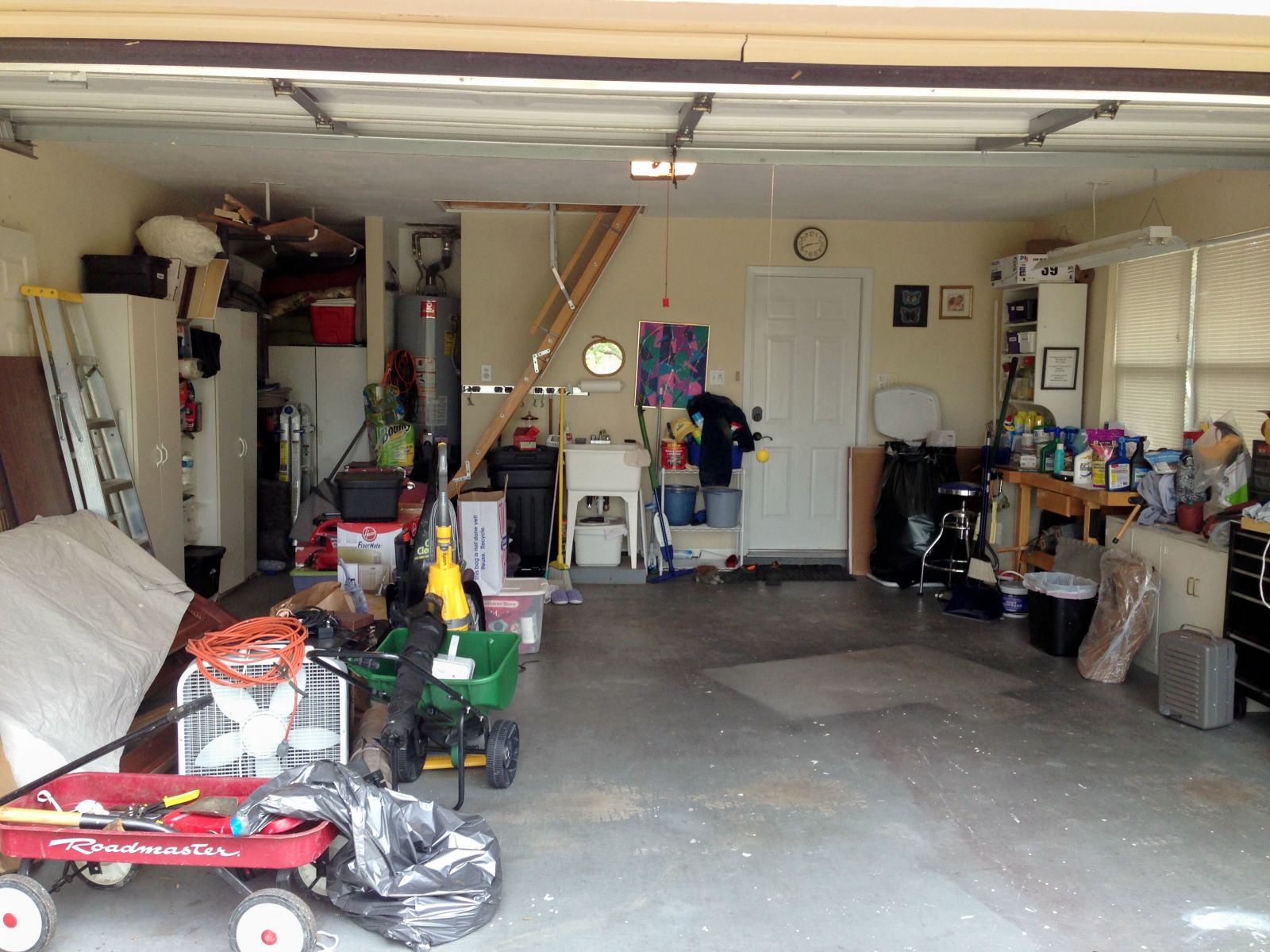
Should you store paint in the garage? Is your garage floor a safety hazard? In our process of sorting through garage contents, we often find items that can be stored differently in the garage, and more often, we find items that should not be stored in the garage at all.
Paint
Problem: The key to successful paint storage is to keep it in a cool dry place. When leftover paint is stored in a place that gets very hot or very cold, the paint will change in consistency, making it unusable. That rules out almost every garage ever built.
Key Points: The two most important factors when you’re choosing a place to store leftover paint are: low moisture and temperature-control. You want to avoid places with high moisture because metal paint cans will quickly form rust around the lid. As soon as you open a paint can with a rusted lid, pieces of rust and debris will fall into the paint and ruin your paint job. (The newer plastic paint do not have a rust issue.)
Solutions: A dry basement is a good place to store paint; however, be sure to keep the paint cans off the concrete floor because moisture will wick up and create rust. If you're like most Texans, you most likely do not have a basement. Find a spot in a closet inside your house. Because our pantry expands into the space under our stairs, we put some shoe racks back in that area and that's where we store our paint.
Gasoline
Problem: Gasoline is highly flammable, and poor storage solutions put you at risk for a tragic result.
Key Points: If you have to store gasoline for an emergency generator, your lawn mower or for other purposes, it's important to follow simple safety rules. Fire codes typically restrict gas storage to no more than 25 gallons. Store the gas in containers of 5 gallons or less that have been approved for gasoline. Approved containers include a label or wording directly on the container stating that it meets specifications for portable containers for petroleum products. Never store gas in unapproved or glass containers. Fill the containers no more than 95% full to allow for expansion. Be sure to keep the cap tight on the container. When you buy gasoline to store for your generator, always add a fuel stabilizer right away. Stabilizers contain antioxidants and biocides to prevent compounds and microbial growth from forming on the gas.
Solutions: Store the container:
- At least 50 ft. away from pilot lights and ignition sources such as the heat, sparks, and flames from a water heater, space heater, or furnace.
- On the floor in a place where children can't reach it.
- In a garage or shed out of direct sunlight. Do not store in the house.
- On concrete, place a piece of plywood under the container.
Photos
Problem: Although many people have moved to using digital photos almost exclusively, many people still have hundreds or even thousands of traditional photographs that are being stored improperly which may result in them being unrecoverable.
Key Points: Generally speaking (for color photos), the warmer the temperature, the faster the colors will fade. The basement is too humid for storing photographs (and prone to flooding), and the attic is too dry. While garages are cooler in the winter, storing them there is not a good long-term solution when the warmer temps kick in. Changes in temperature and humidity will cause your prints to curl, warp, and crack. Cardboard, wood, and many plastics give off gases that will damage your photographs. Exposure to light will quickly fade them (especially sunlight!).
Solutions: Find an area in your house to store your pictures that doesn’t get a lot of light, has low temperatures, and has low humidity. Most photos will store well in your house between 50- and 75-degrees F. If you’re looking to store your photographs for decades to come, put them in a room with low humidity and a temperature below 35F if possible. Keep your photographs in proper storage containers. Do not store your photos in ordinary cardboard boxes.
Lawn and Garden Tools
Problem: Lawn and Garden Tools can accumulate and take up a lot of floor space. Some tools provide opportunities for injury due to sharp edges, etc.
Key Points: Leaving lawn and garden tools stored leaning against a wall or laying on the floor is asking for an accident. Besides being a trip hazard, this also takes up precious space in your garage.
Solutions: Go vertical. The storage section of your local hardware or home and garden store hold many options for hanging Lawn and Garden Tools, and they are not too difficult to install. Hanging your tools on the wall not only keeps your floor free, but also makes it very easy to find the right tool for your project when you need it.
The picture at the start of this blog is a garage we helped organize. Here's the "after photo."
We'd love to help you with your garage organization. Call us today!

.JPG)

